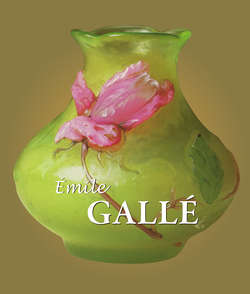Читать книгу Émile Gallé - Émile Gallé - Страница 2
Introduction
ОглавлениеPitcher, c. 1878. Faience, yellow flakes, white tin glaze, height: 45 cm, width: 38 cm, depth: 19 cm. Landesmuseum Württemberg, Stuttgart.
“Chasseur et Chasseresse” coffee service, 1882–1884. Faience, yellow flakes, blue tin glaze, coffee pot: height: 26.5 cm, width: 22 cm, depth: 15 cm. Musée de l’École de Nancy, Nancy.
During the end of the 19th century, Western Europe experienced a great rebirth and reinvigoration in decorative arts, with a focus on the imitation of nature. In fact, in the 1860s, vital scientific works (by Haeckel, Kommode, Blossfeldt, etc.) were published, offering the new art a repertoire of forms, and directing it towards a path of modernity. At the same time, a taste for Japanese art started to develop, seen through personalities such as Hayashi Tadamasa, an art dealer, who set up residence in France, enabling Western Europe to discover Japanese modes of production. Japanese art is based on the observation of nature, on the poetic interpretation of natural forms. Science and art displayed a similar move towards renewal during the 19th century.
This went hand in hand with an artistic awakening of nationalities throughout Western Europe. It was no longer a question of the past nor foreign taste. Instead each nation developed its own aesthetic. Above all, functionality became a priority in arts, decorative embellishments were reduced and useful decoration and objects moved to the foreground. Such art was forbidden during the century through various trends: “[this century] had no folk art” said Émile Gallé in 1900. In the 1870s to the 1880s, their forces returned. What was seen as superfluous in the past was revived in the field of arts. All these events occurred in Western Europe at the same time, and led in the late 19th century to the birth of Art Nouveau, a name that perfectly reflected the innovativeness of the art movement. Although an overall stylistic similarity existed, the formal development of Art Nouveau varied from land to land.
The 1889 World Exposition in Paris reflected the scale of the influence of Art Nouveau, exposing a complete image not only of the various areas of production, but also of the national tendencies. Art Nouveau exploded in France in 1895 in a similar way that Alphonse Mucha’s placard for Sarah Bernhardt in the role of Gismonda caused a sensational uproar. In December of the same year, Siegfried Bing, an art dealer with German ancestry but French nationality, opened a gallery entirely devoted to Art Nouveau and played a significant role in the diffusion of the movement.
“Fleurs ornemanisées”, four bowls, “Animaux héraldiques” service, 1884. Faience, grey flakes, blue tin glaze, height: 3.5 cm, width: 22 cm, depth: 19 cm. Landesmuseum Württemberg, Stuttgart.
In the realm of decorative arts Émile Gallé (1846–1904) – a Nancy-born glassmaker, carpenter, and ceramicist – acquired over the decade much fame with his Art-Nouveau-style art pieces. He incorporated his passion for botany in his father’s trade of pottery and glassware in 1877. His inspiration came from nature and from the works of Japanese artists, which he collected. He developed new techniques, filed patents, and directed various steps in the process of development, a legacy in the industrial revolution in his workshops. During the 1889 World Exposition, Gallé received three awards for his entries. He then acquired the epithet homo triplex from the critic Roger Marx.
In 1901, together with Victor Prouvé (1858–1943), Louis Majorelle (1859–1926), and Eugène Vallin (1856–1922), he founded Alliance Provinciale des Industries d’Art, also known as École de Nancy. Their goal was to eliminate the separation between disciplines: there should no longer exist a distinction between experienced and unexperienced artists. Nature is the foundation of their aesthetic, seen through the creation of flower and plant stylisation. After Art Nouveau reached its peak in 1900, he quickly disappeared from the world of art. In contradiction to his major speeches, Art Nouveau is a luxury style, difficult to reproduce on a large scale. The First International Exhibition of Modern Decorative Arts in Turin of 1902 indicated that a new art movement was already underway: Art Deco.
